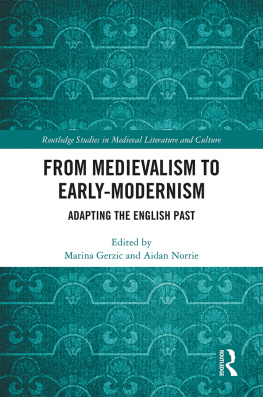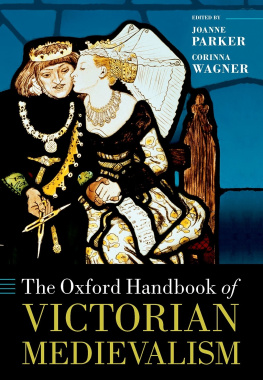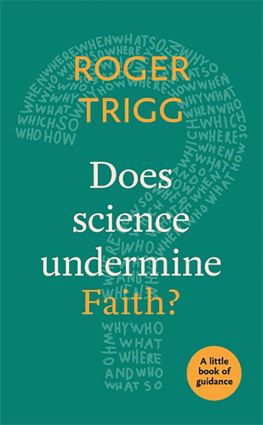M edievalism AND THE G othic
IN A ustralian C ulture
M aking THE M iddle A ges
THE CENTRE FOR MEDIEVAL STUDIES
UNIVERSITY OF SYDNEY, AUSTRALIA
Editorial Board
Geraldine Barnes (University of Sydney)
Margaret Clunies Ross (University of Sydney)
Penelope Gay (University of Sydney)
David Matthews (University of Newcastle, Australia)
Stephanie Trigg (University of Melbourne)
Advisory Board
Jrg Glauser (Universities of Zurich and Basel)
Stephen Knight (University of Wales, Cardiff)
Ulrich Mller (University of Salzburg)
Russell Poole (Massey University, New Zealand)
Tom Shippey (Saint Louis University)
Richard Utz (University of Northern Iowa)
Kathleen Verduin (Hope College, Michigan)
Series Editors
Geraldine Barnes (University of Sydney)
Margaret Clunies Ross (University of Sydney)
Editorial Assistant
Maryna Mews
Publication of this work was assisted by a publication grant from the University of Melbourne and the Research and Graduate Studies Committee, Faculty of Arts, the University of Melbourne.
M edievalism AND THE G othic
IN A ustralian C ulture
Edited by
Stephanie Trigg
MELBOURNE UNIVERSITY PRESS
An imprint of Melbourne University Publishing Ltd
187 Grattan Street, Carlton, Victoria 3053, Australia
mup-info@unimelb edu.au
www.mup.com.au
First published 2005, Brepols Publishers n.v., Turnhout, Belgium
First published in Australia and New Zealand 2006
Text Brepols Publishers n.v., Turnhout, Belgium 2005
Design and typography Ellis Creative and Brepols Publishers 2005
This book is copyright. Apart from any use permitted under the Copyright Act 1968 and subsequent amendments, no part may be reproduced, stored in a retrieval system or transmitted by any means or process whatsoever without the prior written permission of the publishers.
Printed in Australia by The University of Melbourne Design & Print Centre
National Library of Australia Cataloguing-in-Publication entry
Medievalism and the Gothic in Australia.
Bibliography.
Includes index.
ISBN 0 522 85247 5.
1. Medievalism Australia History. 2. Architecture,
Gothic Australia. 3. Gothic revival (Architecture)
Australia. 4. Gothic literature Australia. 5. Gothic
revival (Literature) Australia. I. Trigg, Stephanie.
Contents
S tephanie T rigg
D avid M atthews
P eter O tto
A ndrew L ynch
L ouise DA rcens
M argaret R ogerson
J enna M ead
V alerie K rips
G raldine B arnes AND A drian M itchell
S arah R andles
V ictoria E mery
M egan C assidy -W elch
A dina H amilton
M atthew C hrulew
K en G elder
P aul J ames AND S tephanie T rigg
Acknowledgements
I would like to thank Graldine Barnes, Margaret Clunies Ross and Simon Forde, who have warmly supported this project from its inception. Louise DArcens, Ken Gelder, Paul James, David Matthews and Peter Otto discussed many aspects of this collection with me, and it is the sharper for their advice. Helen Hickey provided exemplary research assistance, and Simon French and Maryna Mews provided excellent editorial support. I am especially grateful to Robert Colvin, for the front cover photograph, and to Andrew Preston for compiling the index.
Grateful acknowledgement is also made to the Publications Sub-Committee, the Faculty of Arts, and the Department of English, all of the University of Melbourne, for their support of this volume.
Illustrations
Figures
1. Emily Bowring, Panshanger, Sketchbook of Tasmanian Scenes, c . 1859. Reproduced with kind permission from the Allport Library and Museum of Fine Arts, State Library of Tasmania, (p. 103)
2. Old St Marys Cathedral. Lithograph by Robert Russell, 1836, reproduced courtesy of the National Library of Australia, (p. 152)
3. The University of Sydney buildings including the Great Hall (on the right), now the eastern side of the main quadrangle, c . 1887. Reproduced courtesy of the University of Sydney Archives, (p. 156)
4. Interior of MacLaurin Hall, University of Sydney, then the Fisher Library, 1909. Reproduced courtesy of the University of Sydney Archives, (p. 158)
5. The English, Scottish, and Australian Gothic Bank, Melbourne, c . 1920, with the Stock Exchange building to the right. Reproduced courtesy of the ANZ Archives, (p. 159)
6. The Great Hall at Montsalvat, showing the large windows salvaged from Wilson Hall. Reproduced courtesy of the Montsalvat Trust, (p. 162)
7. Cover of the Constitution, Daughters of the Court Scrapbook, Daughters of the Court, Australian Manuscripts Collection, State Library of Victoria, MS 11537. Reproduced with permission, (p. 183)
Introduction: Medieval and Gothic Australia
STEPHANIE TRIGG
F or medieval writers, the Antipodes were a region of otherness, imaginable principally through a series of complex but static geo-cultural fantasies. The further one travelled from Jerusalem, the further one travelled from the heart of Christian truth, and from the centre of the world, according to an understanding framed in terms that were geographical, theological, and ethical. When John Mandeville, for example, in the fifteenth century, wrote about the Antipodes as proof that the world was a circumnavigable sphere, he argued that these regions were the opposite of the more familiar world. Working from the observation that different stars are visible at different points, he remarks:
Be the which I seye you certeynly that men may envirowne alle the erthe of all the world as wel vnder as abouen and turnen ayen to his contre, that hadde companye and schippynge and conduyt, and alleweys he scholde fynde men, londes, and yles als wel as in this contree.
For yee wyten welle that they that ben toward the Antartyk, thei ben streght feet ayen feet of hem that dwellen vnder the Transmontane also wel as wee, and thei that dwellyn vnder vs ben feet ayenst feet. For alle the parties of see and of lond han here appositees habitables or trepassables and [yles] of this half and beyond half.
Mandeville does not conceive of these lands as uninhabited; his earth is populated by opposite communities, yet his understanding of these men, lands and isles is conditioned by the expectation of oddity. His chief example of these lands under the star Antartyk is the country of Lamary, which scholars equate with modern Sumatra. Here the people go naked, as they say that is how God made Adam and Eve; they share sexual partners without marriage; they hold all land and goods in common; and they practise cannibalism. These are familiar tropes from many travel and exploration narratives about various new worlds in the medieval and early modern period. What is less often remarked is that such descriptions barely seem susceptible to historical change. Mandevilles Antipodes are conceived with considerable geographical precision, but they seem unaffected by historical change or progression. Their cultural features are as fixed as the two stars, Transmontane and Antartyk, which hold up the axis around which the earth revolves.









